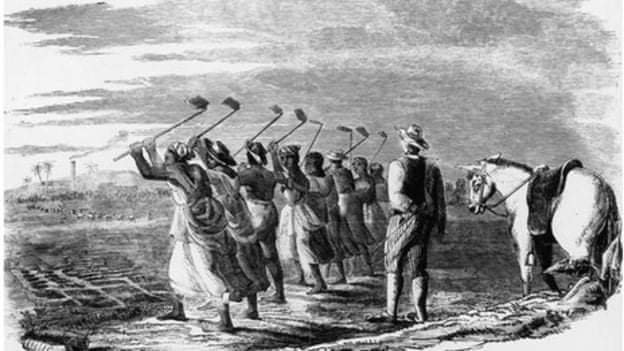THE AFRICANS WHO CAME TO JAMAICA…
The first black slaves brought to Jamaica did not come directly from Africa but were either Africans, or the descendants of Africans, who had been enslaved for a time in Spain. In 1518 King Charles I of Spain (Ferdinand's successor) signed a four-year contract, allowing an annual supply of 4,000 African slaves to enter Hispaniola, Cuba, Jamaica, and Puerto Rico. After that, slaves were taken directly from Africa.
More than 1 million slaves are estimated to have been transported directly from Africa to Jamaica during the period of slavery; of these, 200,000 were re-exported to other places in the Americas.
During the 17th and 18th centuries, the Akan, Ga, and Adangbe from the northwestern coastal region known as the Gold Coast (Ghana) dominated the slave trade to the island. They frequently rebelled and joined the Maroons who had escaped the plantations and lived in mountains. As result of this, the plantation owners decided to enforce other groups from West Africa in an attempt to diffuse the Akans.
After 1776, slaves were “imported” from other parts of Africa- Ga and Adangbe people from Toga, Yorubas and Igbos from the Bight of Biafra (Nigeria) and Kongos from Central Africa and they outnumbered the slaves from the Gold Coast. The demand for slaves required about 10,000 to be imported annually.
In the British mind, slaves were no more than property and merchandise to be bought and sold. On this premise, the British enacted a whole system of slave laws aimed primarily at policing slaves. In general, the premise that slaves were no more than property allowed slave owners to treat them brutally. The severity of this brutality varied. Slaves on large sugar estates generally suffered the harshest punishments, while those on smaller estates and in towns received somewhat better treatment.
Since their arrival on the island, blacks had resisted their enslavement. They engaged in what is referred to as atomized forms of resistance, such as foot dragging (work slowdowns, or 'go-slows'), destruction of property, theft, absenteeism from work, and the covert murder of the slave masters.. But resistance also took the forms of large-scale rebellions and establishment of maroon communities.
By December 1833 there was a Bill for the abolition of slavery, and it became effective on August 1, 1834. At that time all slaves became apprentices. They remained working for the same slave masters. The system was a failure, and that too was abolished. Slaves received their unrestricted freedom on August 1, 1838.
When Britain abolished the institution of slavery in 1834, Jamaica had a population of more than 311,000 slaves and only about 16,700 whites. Unlike other groups of people who came to Jamaica, including the Jews, Indians, Lebanese / Syrians and Chinese, they had no assets, no property or businesses and most of all, no land.
